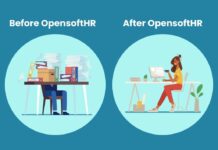As the spread of COVID-19 continues on, countries around the world are implementing drastic measures to contain the Coronavirus.
In times like these, businesses especially those of SMEs are the hardest hit due to the general lack of resources, insufficient investment in operational efficiency and high dependence on direct cost-cutting measures and generation of sales revenue to boost profit over the past years. This will result in a domino effect in the economy which ultimately has the greatest impact on the employable population, where a large majority of people may face retrenchment due to business closures, enforced unpaid leave of absence and mandatory pay cuts.
Singapore companies can cope and survive the COVID-19 crisis if they could quickly ledge on at least these 3 things – leverage on the Government Resilience Budget, implement work from home, and digitise core operations.
We highlight several measures that SMEs should seriously consider implementing in order to minimise the effects from the inevitable disruption to their business operations.
1. Leverage on the Government Resilience Budget
In a bid to minimise economic impact this year, the Ministry of Finance has introduced a supplementary Budget package called the Government Resilience Budget to tide job seekers and businesses over this period.
Here are several key relief measures as announced on 26th March 2020 that could benefit SMEs in the immediate term:
Qualifying commercial properties which have been badly affected by COVID-19, such as hotels, will pay no property tax, up from 15% to 30%. All other non-residential properties are to get a new 30% rebate for the year 2020. Landlords are encouraged to pass the savings on to tenants.
- Deferment of Income Tax Payments for Firms & Self-Employed
To ease cash flow for businesses, an automatic deferment of income tax payments for companies and self-employed workers will be in effect for three months – Companies with corporate Income Tax Payments due in the months of April, May, and June 2020 will be granted an automatic three-month deferment of these payments and will instead be collected in July, August, and September 2020 respectively.
- Helping Employees stay Employed
The Jobs Support Scheme and enhanced Wage Credit Scheme introduced earlier in the Budget 2020, will be enhanced with the Government raising its co-funding rate for wages from 8% to 25% for each worker and raise the monthly qualifying wage ceiling to $4,600 from $3,600.
2. Implement Work from Home
Having employees Work from Home is clearly the preferred option when it comes down to minimising the spread of COVID-19. However easier said than done, there are a few key points you have to look into for this to work.
- First identify the Job Roles/Scopes this can be applied to;
- For employees who have been identified to work from home, ensure that they have Sufficient Logistics required to do so. This includes whether they have a laptop/computer at home, if they have been enabled access to the office network (where applicable) and a stable Internet Connection;
- For employees whose job roles are physically demanding in practice, SMEs can look into utilising their existing skills towards other operations that can be carried out remotely or changing up the mode of delivery of their existing job role.
3. Digitise Core Operations
Most SMEs shun the thought of implementing Work from Home due to the inability to track and measure work that is and has been done. However, there are several online platforms and tools that can assist to do just that and at relatively minimal short-term cost.
- Leverage on Online Communication Tools such as Zoom to facilitate day to day discussions and meetings, or Slack for internal communication with employees;
- For SMEs who wish to monitor the time spent on work activity of their employees working from home, they can look into Time-Tracking Applications such as DeskTime and Hivedesk that measures real-time productivity;
- To effectively keep track on the days where employees are required to take Leave of Absence (LOA) or be compliant to Stay Home Notices (SHN) or Quarantine rules, SMEs can look into Online Leave Management Applications where employees can apply for such Leave themselves via Mobile or Desktop and be accessed on a centralised platform.
Most of these application tools offer Free Trial periods, so SMEs can look into giving these solutions a try at zero cost.
It is the responsibility of employers to have proper planning and be prepared to enforce social distancing measures within the workplace. This may or may not include work from home measures, drafting and communicating out a business continuity plan to their employees. We all have a part to play in curbing the spread of COVID-19, and minimising its economic and social repercussions in this circle of life.
 Home
Home















